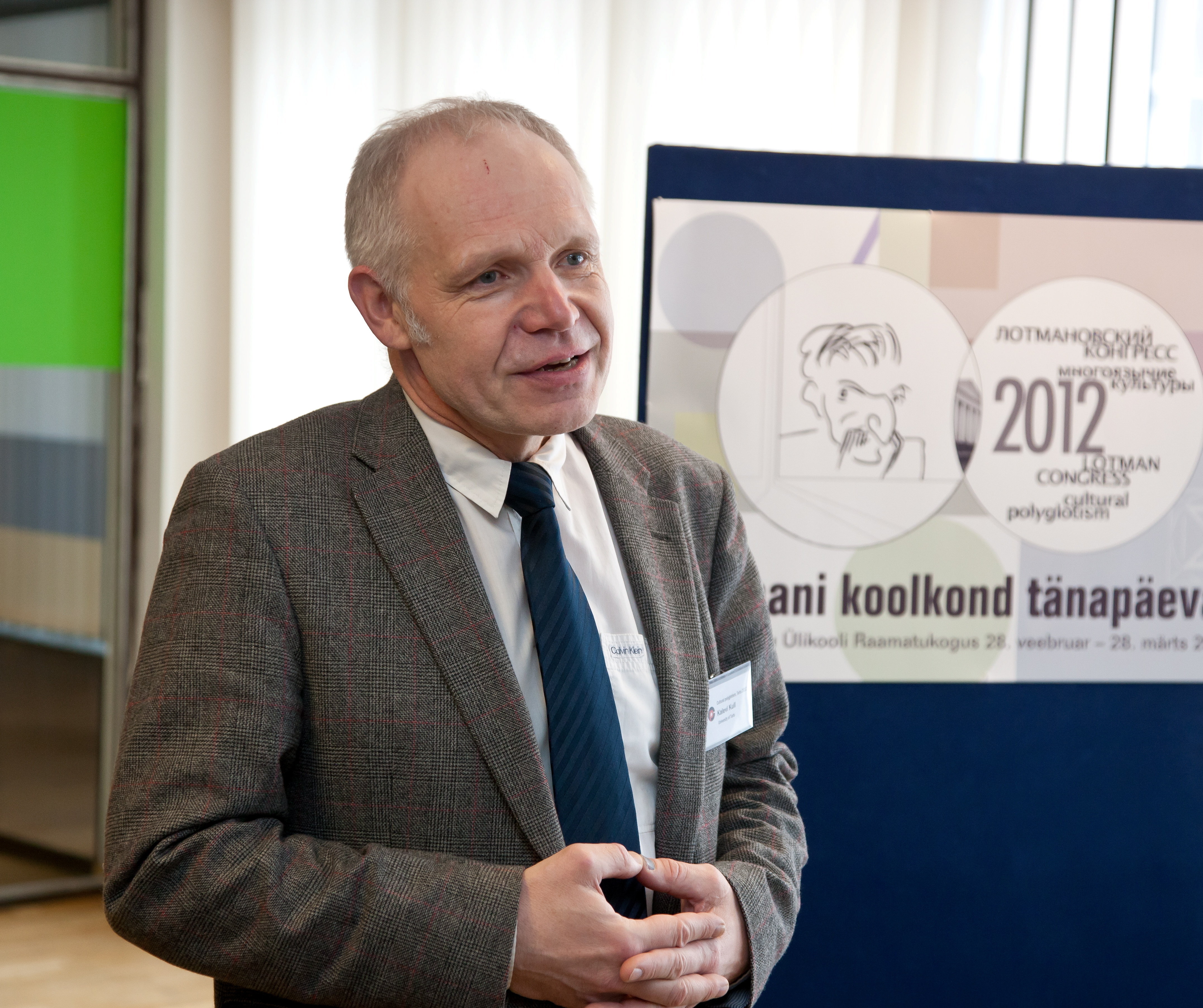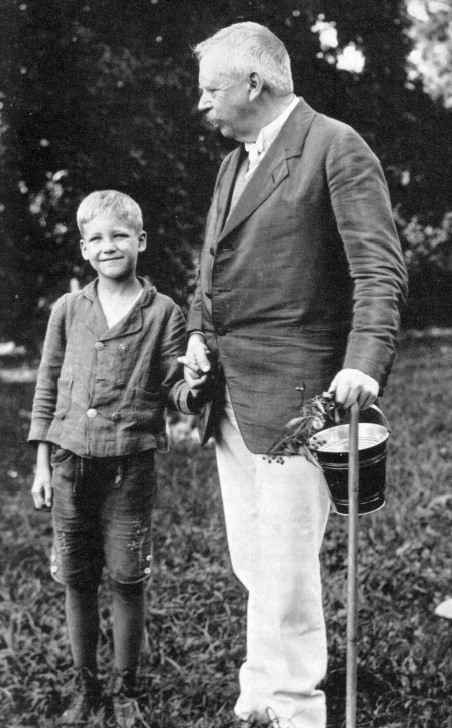|
Biosemiotics
Biosemiotics (from the Greek βίος ''bios'', "life" and σημειωτικός ''sēmeiōtikos'', "observant of signs") is a field of semiotics and biology that studies the prelinguistic meaning-making, biological interpretation processes, production of signs and codes and communication processes in the biological realm.Favareau, Donald (ed.) 2010. ''Essential Readings in Biosemiotics: Anthology and Commentary''. (Biosemiotics 3.) Berlin: Springer. Biosemiotics integrates the findings of biology and semiotics and proposes a paradigmatic shift in the scientific view of life, in which semiosis (sign process, including meaning and interpretation) is one of its immanent and intrinsic features. The term ''biosemiotic'' was first used by Friedrich S. Rothschild in 1962, but Thomas Sebeok and Thure von Uexküll have implemented the term and field. The field, which challenges normative views of biology, is generally divided between theoretical and applied biosemiotics. Insights f ... [...More Info...] [...Related Items...] OR: [Wikipedia] [Google] [Baidu] |
Thomas Sebeok
Thomas Albert Sebeok ( hu, Sebők Tamás, ; 1920–2001) was a Hungarian-born American polymath,Cobley, Paul; Deely, John; Kull, Kalevi; Petrilli, Susan (eds.) (2011). Semiotics Continues to Astonish: Thomas A. Sebeok and the Doctrine of Signs'. (Semiotics, Communication and Cognition 7.) Berlin: De Gruyter Mouton. semiotician, and linguist. As one of the founders of the biosemiotics field, he studied non-human and cross-species signaling and communication. He is also known for his work in the development of long-time nuclear waste warning messages, in which he worked with the Human Interference Task Force (established 1981) to create methods for keeping the inhabitants of Earth away from buried nuclear waste that will still be hazardous 10,000 or more years in the future. Early life and education Thomas Sebeok was born on November 9, 1920, in Budapest, Hungary. He attended secondary school at the famous Budapest-Fasori Evangélikus Gimnázium, which educated notables such as ... [...More Info...] [...Related Items...] OR: [Wikipedia] [Google] [Baidu] |
Semiotics
Semiotics (also called semiotic studies) is the systematic study of sign processes ( semiosis) and meaning making. Semiosis is any activity, conduct, or process that involves signs, where a sign is defined as anything that communicates something, usually called a meaning, to the sign's interpreter. The meaning can be intentional such as a word uttered with a specific meaning, or unintentional, such as a symptom being a sign of a particular medical condition. Signs can also communicate feelings (which are usually not considered meanings) and may communicate internally (through thought itself) or through any of the senses: visual, auditory, tactile, olfactory, or gustatory (taste). Contemporary semiotics is a branch of science that studies meaning-making and various types of knowledge. The semiotic tradition explores the study of signs and symbols as a significant part of communications. Unlike linguistics, semiotics also studies non-linguistic sign systems. Semiotics includes th ... [...More Info...] [...Related Items...] OR: [Wikipedia] [Google] [Baidu] |
Zoosemiotics
Zoosemiotics is the semiotic study of the use of signs among animals, more precisely the study of semiosis among animals, i.e. the study of how something comes to function as a sign to some animal. It is the study of animal forms of knowing. Considered part of biosemiotics, zoosemiotics is related to the fields of ethology and animal communication. It was developed by semiotician Thomas Sebeok based on the theories of German-Estonian biologist Jakob von Uexküll. The field is defined by having as its subject matter all of those semiotic processes that are shared by both animals and humans. The field also differs from the field of animal communication in that it also interprets signs that are not communicative in the traditional sense, such as camouflage, mimicry, courtship behavior etc. The field also studies cross-species communication, for example between humans and animals. See also * Biosemiotics *Phytosemiotics *Zoopoetics References Further reading * Sebeok, Thomas A. 197 ... [...More Info...] [...Related Items...] OR: [Wikipedia] [Google] [Baidu] |
Kalevi Kull
Kalevi Kull (born 12 August 1952, Tartu) is a biosemiotics professor at the University of Tartu, Estonia. He graduated from the University of Tartu in 1975. His earlier work dealt with ethology and field ecology. He has studied the mechanisms of species coexistence in species-rich communities and developed mathematical modelling in ecophysiology. Since 1975, he has been the main organiser of annual meetings of theoretical biology in Estonia. In 1992, he became a Professor of Ecophysiology in the University of Tartu. In 1997, he joined the Department of Semiotics, and became a Professor in Biosemiotics. From 2006 to 2018, he was the Head of the Department of Semiotics in the University of Tartu, Estonia. His field of interests include biosemiotics, ecosemiotics, general semiotics, theoretical biology, theory of evolution, history and philosophy of semiotics and life science. He was the president of the Estonian Naturalists' Society in 1991–1994. He is the president of the Inte ... [...More Info...] [...Related Items...] OR: [Wikipedia] [Google] [Baidu] |
Phytosemiotics
Phytosemiotics is a branch of biosemiotics that studies the sign processes in plants, or more broadly, the vegetative semiosis. Vegetative semiosis is a type of sign processes that occurs at cellular and tissue level, including cellular recognition, plant perception, plant signal transduction, intercellular communication, immunological processes, etc. The term 'phytosemiotics' was introduced by Martin Krampen in 1981. See also *Plant perception (physiology) *Plant communication *Hormonal sentience *Zoosemiotics *International Society for Biosemiotic Studies References *Affifi, Ramsey 2013. Learning plants: Semiotics between the parts and the whole. ''Biosemiotics'' 6: 547–559. *Faucher, Kane 2014. Phytosemiotics revisited: Botanical behavior and sign transduction. ''Semiotica'' 202: 673–688. * Krampen, Martin 1981. Phytosemiotics. ''Semiotica'' 36(3/4): 187–209. *Krampen, Martin 1992. Phytosemiotics revisited. In: Sebeok, Thomas A.; Umiker-Sebeok, Jean (eds.), ''Biosemi ... [...More Info...] [...Related Items...] OR: [Wikipedia] [Google] [Baidu] |
Thure Von Uexküll
Karl Kuno Thure Freiherr von Uexküll (March 15, 1908, Heidelberg – September 29, 2004, Freiburg) was a German scholar of psychosomatic medicine and biosemiotics. He developed the approach of his father, Jakob von Uexküll, in the study of living systems and applied it in medicine. His mother was Gudrun Baroness von Uexküll (Gräfin von Schwerin). Career ;1955–1965: Director of the Medical Outpatient Department at the University of Giessen ;1966–1977: Director of the Department of Internal Medicine and Psychosomatics at the University of Ulm Awards Honorary Doctor of the University of Tartu (1994) Works *''Der Sinn des Lebens'' (with Jakob von Uexküll). Godesberg: H.Küpper (1947). *''Der Mensch und die Natur. Grundzüge einer Naturphilosophie.'' Bern: Francke (1953). *''Grundfragen der psychosomatischen Medizin.'' Hamburg: Rowohlt (1963). *''Signs, Symbols and Systems.'' In: T. Sebeok, R. Posner (Hg): A semiotic Landscape. Den Haag, Paris, New York (1974), 487–492. * ... [...More Info...] [...Related Items...] OR: [Wikipedia] [Google] [Baidu] |
Semiosis
Semiosis (, ), or sign process, is any form of activity, conduct, or process that involves signs, including the production of meaning. A sign is anything that communicates a meaning, that is not the sign itself, to the interpreter of the sign. The meaning can be intentional such as a word uttered with a specific meaning, or unintentional, such as a symptom being a sign of a particular medical condition. Signs can communicate through any of the senses, visual, auditory, tactile, olfactory, or taste. The term was introduced by Charles Sanders Peirce (1839–1914) to describe a process that interprets signs as referring to their objects, as described in his theory of sign relations, or semiotics. Other theories of sign processes are sometimes carried out under the heading of semiology, following on the work of Ferdinand de Saussure (1857–1913). Overview Peirce was interested primarily in logic, while Saussure was interested primarily in linguistics, which examines the functio ... [...More Info...] [...Related Items...] OR: [Wikipedia] [Google] [Baidu] |
Communication
Communication (from la, communicare, meaning "to share" or "to be in relation with") is usually defined as the transmission of information. The term may also refer to the message communicated through such transmissions or the field of inquiry studying them. There are many disagreements about its precise definition. John Peters argues that the difficulty of defining communication emerges from the fact that communication is both a Universality (philosophy), universal phenomenon and a Communication studies, specific discipline of institutional academic study. One definitional strategy involves limiting what can be included in the category of communication (for example, requiring a "conscious intent" to persuade). By this logic, one possible definition of communication is the act of developing Semantics, meaning among Subject (philosophy), entities or Organization, groups through the use of sufficiently mutually understood signs, symbols, and Semiosis, semiotic conventions. An im ... [...More Info...] [...Related Items...] OR: [Wikipedia] [Google] [Baidu] |
Neuromuscular
A neuromuscular junction (or myoneural junction) is a chemical synapse between a motor neuron and a muscle fiber. It allows the motor neuron to transmit a signal to the muscle fiber, causing muscle contraction. Muscles require innervation to function—and even just to maintain muscle tone, avoiding atrophy. In the neuromuscular system nerves from the central nervous system and the peripheral nervous system are linked and work together with muscles. Synaptic transmission at the neuromuscular junction begins when an action potential reaches the presynaptic terminal of a motor neuron, which activates voltage-gated calcium channels to allow calcium ions to enter the neuron. Calcium ions bind to sensor proteins (synaptotagmins) on synaptic vesicles, triggering vesicle fusion with the cell membrane and subsequent neurotransmitter release from the motor neuron into the synaptic cleft. In vertebrates, motor neurons release acetylcholine (ACh), a small molecule neurotransmitter, wh ... [...More Info...] [...Related Items...] OR: [Wikipedia] [Google] [Baidu] |
Anthroposemiotics
Human communication, or anthroposemiotics, is a field of study dedicated to understanding how humans communicate. Humans ability to communicate with one another would not be possible without an understanding of what we are referencing or thinking about. Because humans are unable to fully understand one another's perspective, there needs to be a creation of commonality through a shared mindset or viewpoint. The field of communication is very diverse, as there are multiple layers of what communication is and how we use its different features as human beings. Humans have communicatory abilities other animals do not, for example, humans are able to communicate about time and place as though they are solid objects. Humans communicate to request help, to inform others, and to share attitudes for bonding. Communication is a joint activity largely dependent on the ability to maintain common attention. We share relevant background knowledge and joint experience in order to communicate co ... [...More Info...] [...Related Items...] OR: [Wikipedia] [Google] [Baidu] |
Aleksei Turovski
Aleksei Turovski (born 4 August 1946 in Moscow) is an Estonian zoologist and ethologist, specialising in parasitology and zoosemiotics.Kull, Kalevi 2016Need for impressions: Zoosemiotics and zoosemiotics, by Aleksei Turovski ''Sign Systems Studies'' 44(3): 456–462. In 1973, he graduated from Tartu University with a degree in zoology; since 1972 he's been working in the Tallinn Zoo. In 1976–2001, Turovski worked in the Estonian Marine Institute. Turovski has been recognised as the ''Guardian of Estonian Life Science'' ( et, Eesti Eluteaduse Hoidja) in 2007 for his work in popularising culture Culture () is an umbrella term which encompasses the social behavior, institutions, and norms found in human societies, as well as the knowledge, beliefs, arts, laws, customs, capabilities, and habits of the individuals in these groups.Tyl ...s of animals. References External links Turovski's lectures in Radio Night University Living people 1946 births Estonian ... [...More Info...] [...Related Items...] OR: [Wikipedia] [Google] [Baidu] |
.jpg)


